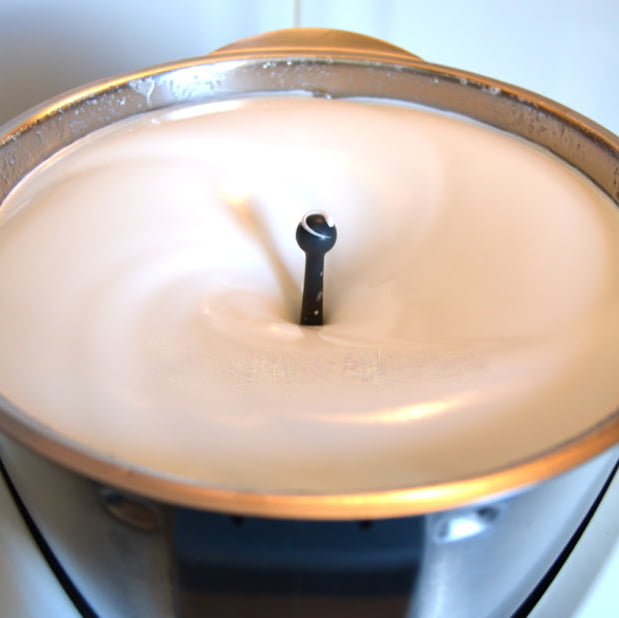When it comes to creating heavenly confections, mastering the art of Swiss Meringue Buttercream is a game-changer.
This velvety, light, and luscious frosting, prepared effortlessly with Thermomix, is a surefire way to elevate your baking prowess.

swiss meringue buttercream thermomix
Persons
4
Ingredients
- 425 g Unsalted Butter, Softened, Cubed (2cm)
- 200 g Egg Whites (Approximately 6 Large Eggs)
- 250 g Castor Sugar
- 1 Pinch of Salt
- 1-2 tsp Vanilla Bean Paste
Instructions
- Before diving in, take note of these tips:
- Place a bowl onto the mixing bowl lid, weigh the butter, and set it aside.
- Combine egg whites, castor sugar, and salt in the mixing bowl, then heat for 5 minutes at 60 degrees/sp2.5.
- Crafting the Meringue Magic
- Whipping Up the Meringue:
- Insert the butterfly whisk and whip until the meringue is smooth, glossy, and stiff. This takes about 5 minutes at sp4.
- Chill and Set:
- Allow the mixing bowl of meringue to cool in the refrigerator for 30-40 minutes. Ensure it reaches room temperature before proceeding.
- Butter Integration:
- Turn the dial to 6 minutes at sp3. Add the reserved soft butter, one piece at a time through the hole in the mixing bowl lid. The frosting may look curdled initially, but fear not – it will transform into a smooth, glossy delight.
- Finishing Touch:
- Scrape down the sides of the mixing bowl with a spatula, then add 1-2 tsp of vanilla paste or your preferred flavoring. Whip for 20 seconds at speed 3.5. Repeat if necessary until the mixture achieves a flawless, smooth texture. Happy frosting!
- Conclusion
- In the realm of baking, Swiss Meringue Buttercream reigns supreme. The Thermomix method outlined here guarantees a silky, irresistible frosting that will leave your creations unparalleled.
FAQs
- Can I use salted butter instead of unsalted?
- While you can, it's advisable to use unsalted butter to have better control over the saltiness of the frosting.
- How long can I store Swiss Meringue Buttercream?
- When refrigerated, it can last up to a week. Ensure it's in an airtight container for optimal freshness.
- What if the frosting looks curdled after adding butter?
- Don't panic! Keep whipping, and it will eventually transform into a smooth and glossy texture.
- Can I freeze Swiss Meringue Buttercream?
- Absolutely! It freezes well for up to three months. Thaw in the refrigerator and rewhip to restore the texture.
- Is there a substitute for vanilla bean paste?
- Vanilla extract can be used as a substitute. Adjust the quantity according to your taste preference.